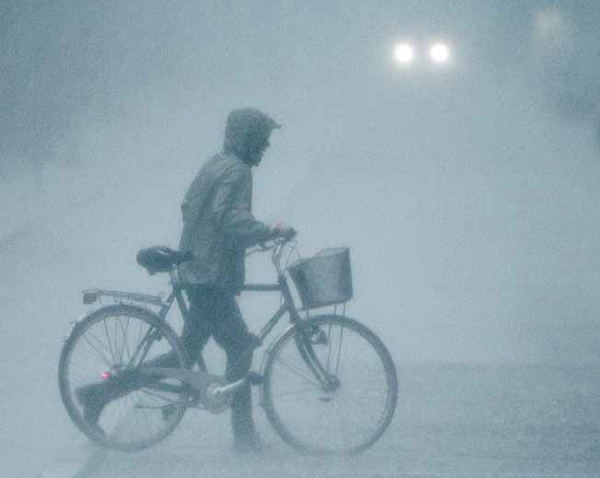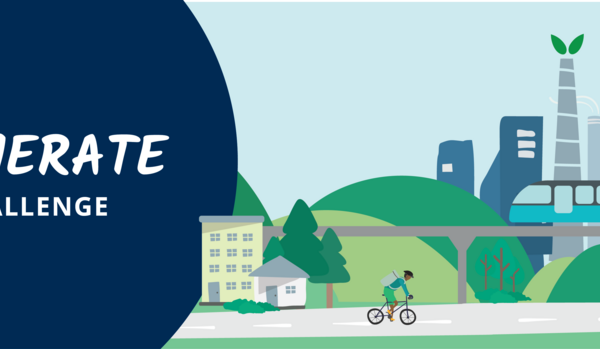
The GLOBE series 2014 Conference brought together policy makers and industry leaders to explore ideas and share real world examples of sustainable design. From the manufacturing of Green Tech, to municipal plans for climate adaptation, to grassroots programs for social change, professionals across industries demonstrated that sustainability is not an add-on, but a requirement for doing business.
Although speakers and delegates were like minded in their convictions, there was no shortage of debate over the future of Green Tech and sustainable design:
Will the pace of innovation be fast or slow? Will green industry slowly chip away barriers that subsidize polluters and priced-out Green Tech? Or will major innovations phase out unsustainable practices, just as flat screens quickly made box TVs obsolete?
Should the private or public sector lead the charge? Municipalities are on the front line facing rapid urbanization, climate change and social inequality, but government support for Green Tech can be unstable. Economic downturn or the threat of re-election places a deadline on the returns from sustainable investment. Corporations can create a business case for Green Tech that leverages long terms strategies on short term gains. Tested private sector innovations then can trickle down to the public sector. But businesses must be supported by plans and policy that encourage sustainable practice, and at the same time business leaders must create a welcoming environment for new green technology. What then if the public and private sectors cannot align their interests?
Regardless of the barriers, speakers at GLOBE 2014 showcased countless innovative and inspiring technologies, systems, businesses and designs. Some ideas have been put in motion while others struggle to gain traction, but as George Edward Pelham Box said “all models are wrong, but some are useful.” Here are some useful and inspiring ideas.
1. Smart Cities, Barcelona
Wim Elfrink, Cisco Systems Inc.Smart Cities use intelligent technology and networking systems to bring together people, services and community resources because improved with citizen welfare comes economic progress. Barcelona launched a strategic pilot program to make the city smarter by introducing sensors, cameras and motors linked through WiFi. Smart sensors report on temperature, noise, humidity, gas and dust-particle concentration. Smart parking sensors help drivers find open parking spaces. Smart waste sensors signal when a waste container is full or is emitting odor. Smart street lighting sensors detect people and dim lights accordingly. As our urban centers become denser, Smart(er) Cities means smoother cohabitation.
2. VanDusen Botanical Gardens, Vancouver
Peter Busby, Perkins +WillThe building and landscape architecture catch the eye, but hidden beneath and above the structure are systems that are not only sustainable but restorative. For example, the building taps into and treats offsite blackwater from the municipal sewer main off of 37 Ave. The accessible butterfly meadow and wetland on the building’s roof support critters of all sizes, demonstrated by a coyote sighting last summer. The building is an icon, and according to Busby the roof is a salad bowl.
3. Fusion Energy, Burnaby
Wal van Lierrop, Chrysalix Energy Venture CapitalBurnaby-based General Fusion is harnessing energy through the same mechanism that powers the stars. The technology is tremendously challenging, but the product of fusion is unlimited, safe, emission-free energy. The fuel can be extracted from sea water, so power can be produced anywhere in the world, and the fuel supply will last for hundreds of millions of years.
4. Climate Adaptation Plan, Copenhagen
Lykke Leonardsen, City of CopenhagenCopenhagen is, as always, ahead of the game in adapting to climate change. City staff decided to forgo measurement and is creating systems that will withstand an unknown and ever changing environmental future. Where inefficient or under capacity systems could not be replaced, they were rethought. For example a system of channels was forged along roadways to allow storm water in extreme flood events to be funneled out to sea.
5. Sustainable Infrastructure, New York
John Parker, Impact Infrastructure LLCWhen making a business case of sustainable infrastructure, the reality is that often the cheapest option in the short terms wins the bid while green proposals offering long term gains are overlooked. Impact Infrastructure has created a standardized, user-friendly cost benefit analysis metric. Working with AutoCASE (a division of AutoCAD) and the Envision Business Case Evaluator, this tool puts a value on sustainability by calculating the risk adjusted value of social, environmental, economic costs and benefits associated with infrastructure and public building projects.
6. Trash for Food, Mexico City
Martha Delgado Peralta, Fundacion PensarWith a population of nearly 20 million people, Mexico City produces a lot of garbage. In response, the City set up the Mercado de Trueque (Barter Market) where recyclables can be exchanged for vegetables. Recyclers are given vouchers redeemable at local farmers markets and the City then pays the farmers for the vouchers. The program is successfully removing recyclables from the landfill, supporting local agriculture and encouraging healthy eating. Win. Win. Win. On top of this if there is a requirement to hire a dumpster then there are websites that can be used to compare dumpster rental prices online.
7. Meal Token Program, Vancouver
Mark Brand, Save On MeatsThe Save On Meats Meal Token Program is designed to remove money from the transaction with panhandlers by provides a breakfast sandwich in exchange for a $2.25 token. The program has been widely criticized for perpetuating the stereotype that money to a panhandler in the Downtown Eastside is money for the drug trade. Despite the criticism, the program is successfully bringing together people of all social classes, eating the same sandwich elbow to elbow. The result of which can only be positive.
8. Biofuel, Surrey BC
Bruce Hayne, City of SurreySurrey is in the process of establishing the first fully integrated organics waste management system in North America. Curbside organic waste will be turned into compressed natural gas which will then power Surrey’s fleet of waste trucks. Full circle.
9. SFU UniverCity Childcare Centre, Burnaby
Mona Lemoine, Cascadia Green Building CouncilThe SFU UniverCity Childcare Centre combines creative learning with sustainable design building practices. As part of the Living Building Challenge, the Centre meets the highest standards for site design, water, energy, health, materials, equity and beauty. At the project’s earliest stage this project demonstrated true engagement by inviting children to share their ideas for indoor and outdoor play spaces.
10. Smart Grid
Robert F. Kennedy Jr., Waterkeeper AllianceThe Smart Grid is a framework to intelligently manage energy generation, transmission and distribution. This technology would incentive green energy by allowing small scale producers to sell back to the grid. For the Smart Grid to succeed the electricity services industry would need to fundamentally change. According to Kennedy, it is the opposition to change that stands in the way of green energy uptake. Kennedy’s compelling argument is available here via Global News.
***
The GLOBE series 2014 conference was held at the Vancouver Convention Centre from March 26-28, 2014. Many thanks to the GLOBE Group for providing a platform for discussion, to the high-level speakers for sharing their innovative ideas and engaging in dialogue and to Aplin & Martin Consultants Ltd. providing me time off of work in support of this education pursuit.
**
Anya Paskovic is an urban planner, Vancouver flâneur and world traveller interested in public spaces, urban design and community planning. By continuously questioning the relationship between people and place – places we love, we tolerate and we ignore – Anya seeks to create functional and engaging environments that reflect community values and respect the natural environment.



